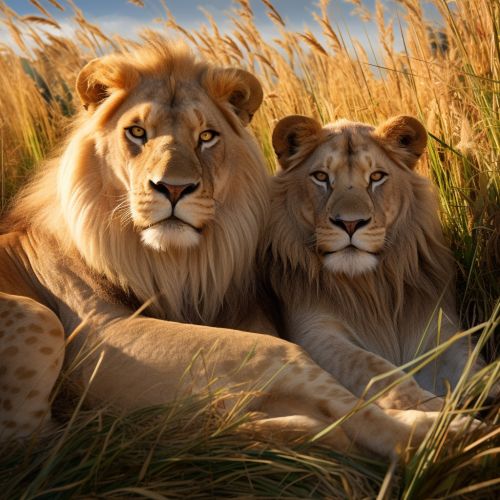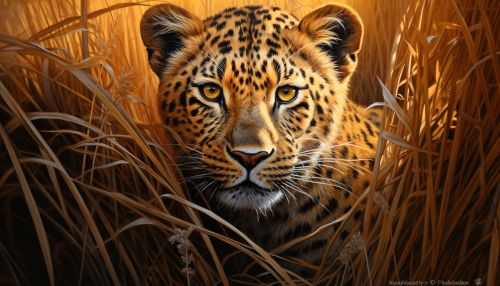Big Cats
Introduction
Big cats, or Pantherinae, are a group of carnivorous mammals that are known for their power and strength. They are part of the Felidae family, which also includes smaller cats. The term "big cats" is typically used to refer to the four largest members of the Panthera genus: the lion, tiger, leopard, and jaguar. These animals are characterized by their ability to roar, a feature that is facilitated by a specialized larynx and hyoid apparatus.
Classification and Evolution
Big cats belong to the family Felidae, which is divided into two subfamilies: Pantherinae and Felinae. The Pantherinae subfamily includes the genera Panthera and Neofelis. The Panthera genus comprises the lion, tiger, leopard, and jaguar, while the Neofelis genus includes the clouded leopards.
The evolution of big cats dates back to nearly 10.8 million years ago, with the Panthera genus diverging from the Felinae subfamily. The first big cat to diverge from the Panthera genus was the snow leopard, followed by the lion, jaguar, and leopard. The tiger was the last to diverge, approximately 3.2 million years ago.


Physical Characteristics
Big cats are known for their large size, with males typically being larger than females. They have strong, muscular bodies and powerful jaws, which are adapted for capturing and killing prey. Their teeth are specialized for cutting and tearing meat, with long, sharp canines and carnassial teeth.
The coat of big cats varies greatly, from the plain, tawny coat of the lion to the rosette-patterned coat of the leopard and jaguar, and the striped coat of the tiger. These patterns provide camouflage, aiding in hunting and protection from other predators.
Behavior and Ecology
Big cats are solitary animals, with the exception of lions, which live in social groups known as prides. They are territorial and mark their territories with scent markings. Big cats are primarily nocturnal, although they can be active at any time of the day. They are ambush predators, relying on stealth and strength to capture their prey.
Big cats play a crucial role in the ecosystem by controlling the population of herbivores. They are also known as keystone species, as their well-being and behavior significantly influence the structure and diversity of their ecosystems.
Conservation
Many big cat species are threatened by habitat loss, poaching, and conflict with humans. Conservation efforts for big cats include habitat preservation, anti-poaching measures, and efforts to reduce human-wildlife conflict. Despite these efforts, big cats continue to face significant threats, and their populations are declining in many parts of the world.
